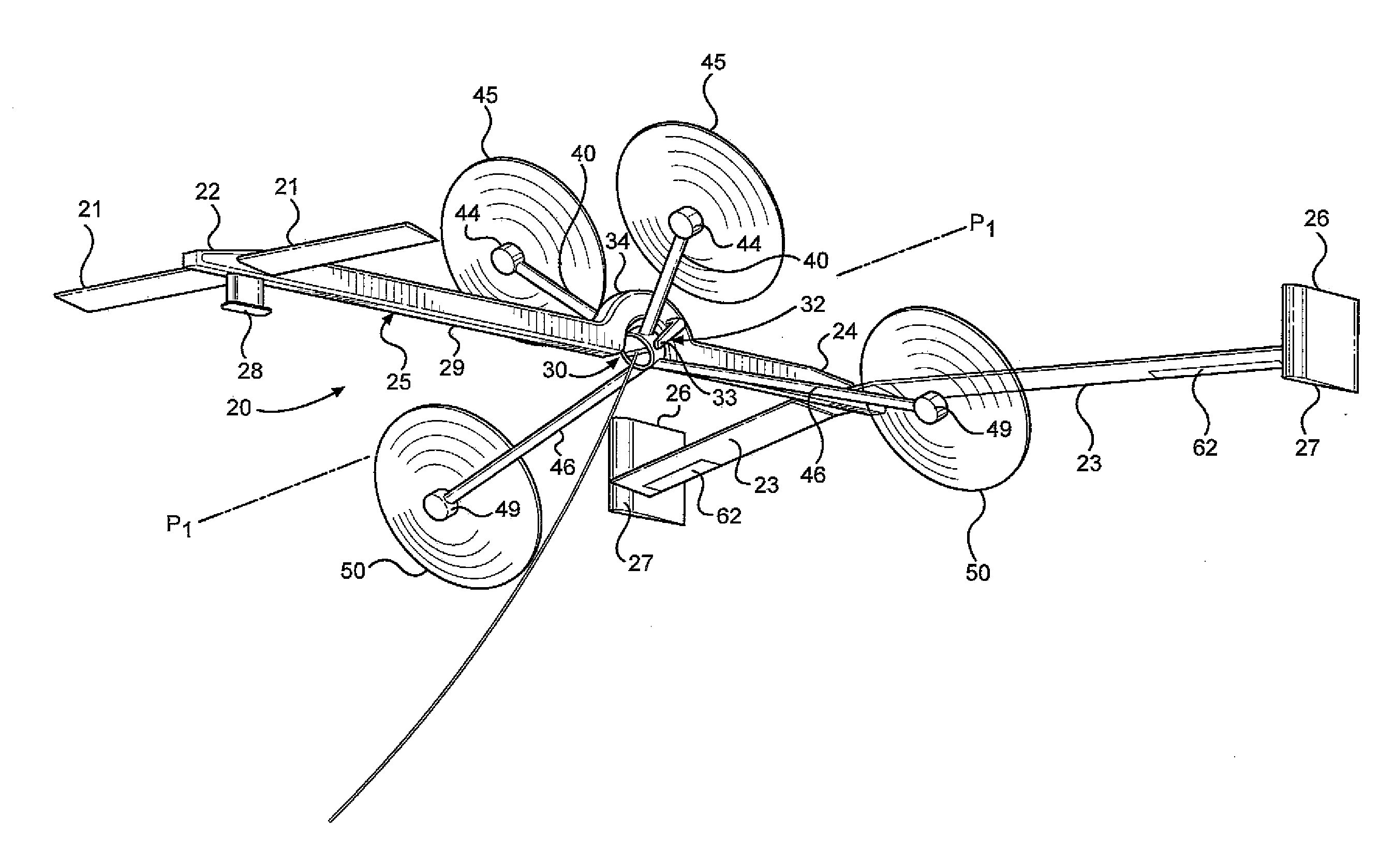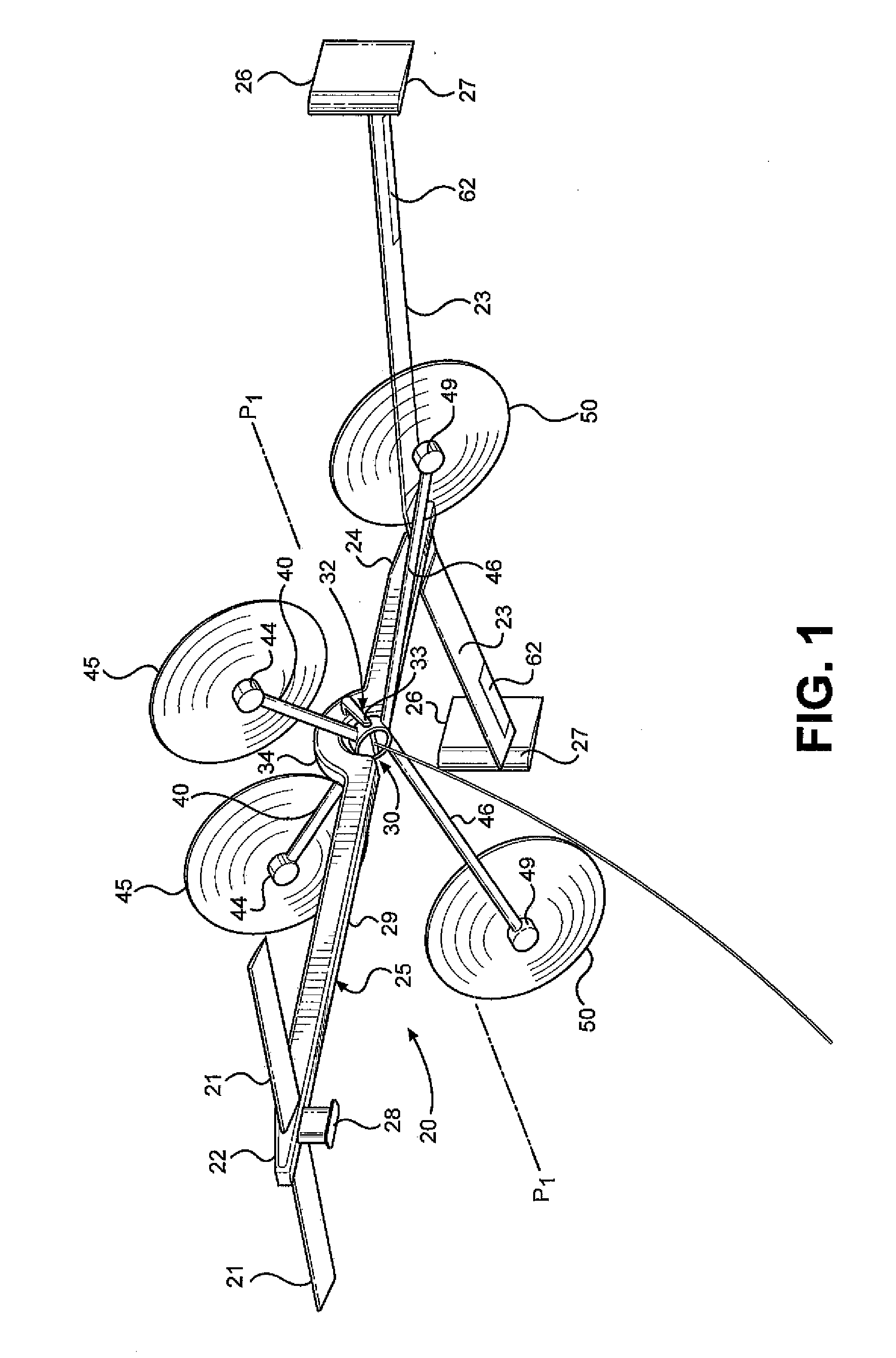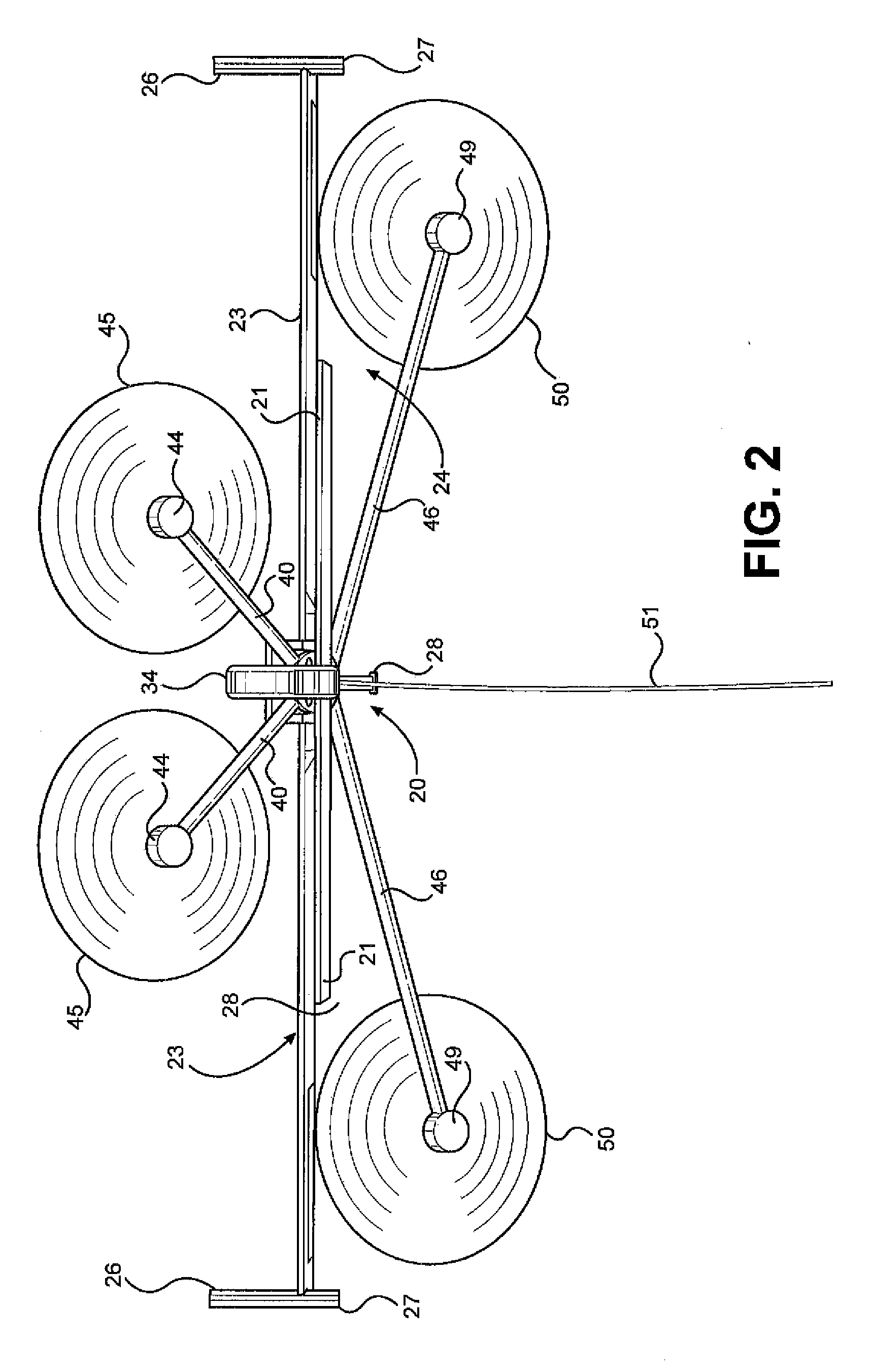Auto-gyro rotor flying electric generator (FEG) with wing lift augmentation
a technology of electric generators and rotors, applied in the direction of electric generator control, renewable energy generation, greenhouse gas reduction, etc., can solve the problems of little or no excess torque available for generating power, and achieve the effect of full generating capacity, reduced wind speed, and increased rotor angle of attack
- Summary
- Abstract
- Description
- Claims
- Application Information
AI Technical Summary
Benefits of technology
Problems solved by technology
Method used
Image
Examples
Embodiment Construction
[0042]The invention combines an auto-gyro rotor FEG 20 with airfoil wings to provide some of the lift necessary to keep the vehicle aloft while generating electrical power. The auto-gyro rotor FEG can have any even number of rotors preferably equal to or greater than four and can have a symmetric rotor layout, as shown in FIGS. 13 and 14, or a staggered rotor configuration, as shown in FIG. 15. The staggered rotor layout, which is a first preferred embodiment of the invention, allows downwind rotors to receive clean air which is air that is not disturbed by upwind rotors during the transition from a zero angle of attack of the rotor plane, which is necessary for vertical takeoff, to a high rotor plane angle of attack used for power generation.
[0043]The invention vehicles or FEGs described in detail herein have four auto-gyro rotors, and both types of rotor layouts are described. More rotors can be added by adding pairs of rotors symmetrically to each side of the vehicle. The inventi...
PUM
 Login to View More
Login to View More Abstract
Description
Claims
Application Information
 Login to View More
Login to View More - R&D
- Intellectual Property
- Life Sciences
- Materials
- Tech Scout
- Unparalleled Data Quality
- Higher Quality Content
- 60% Fewer Hallucinations
Browse by: Latest US Patents, China's latest patents, Technical Efficacy Thesaurus, Application Domain, Technology Topic, Popular Technical Reports.
© 2025 PatSnap. All rights reserved.Legal|Privacy policy|Modern Slavery Act Transparency Statement|Sitemap|About US| Contact US: help@patsnap.com



